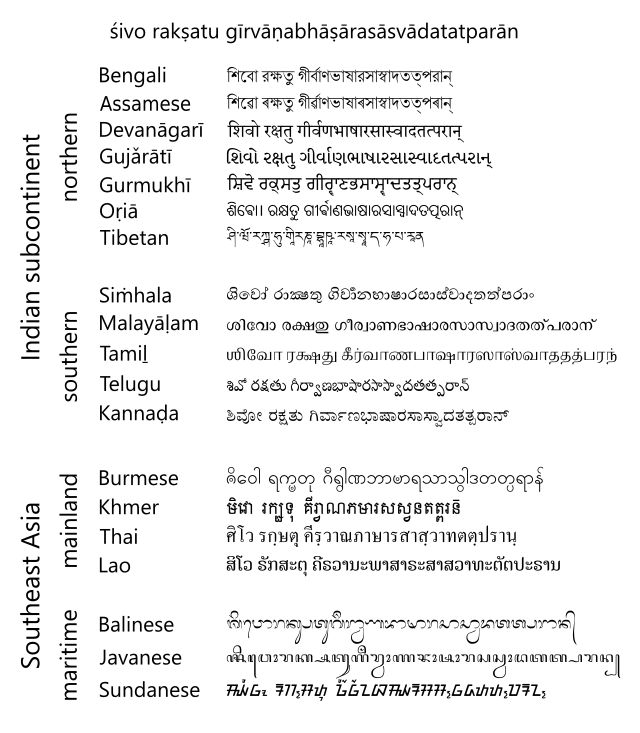Abugida
semi-syllabic writing system where consonnant letters are generally also representing an inherent phonetic vowel, which may be suppressed in initial consonant clusters or final consonants From Wikipedia, the free encyclopedia
An abugida is a writing system that is neither a syllabic nor alphabetic script, but somewhere in between.
This article needs more sources for reliability. |

Overview
The abugida has sequences of consonants and vowels that are written together as a unit, each of which is based on the consonant letter. Vowels must be written down as well, but they are secondary and do not act the same way as consonants.
Syllables
Syllables are built up of consonants, each of which has an inherent vowel. That means a vowel must be pronounced in a syllable even if it is not written down. For example, in Thai, the syllable written as the consonant-vowel pair หา is pronounced haa, but the syllable just written as a consonant ห is pronounced hɔ.
Diacritics
Diacritic symbols may be used to change or mute the inherent vowel, and separate vowel letters may be used when vowels occur at the beginning of a syllable or on their own.
Order
In some abugidas, certain vowels can be written to the right, to the left, on top, or below the consonant that is spoken before it, even if the reading order all of the consonants is left-to-right or right-to-left. An example uses the Thai consonant ก to show where the following vowels must be written.
This is different from a truly alphabetic script in which the vowels and consonants have the same status, and an abjad, whose vowels can be left out. Ethiopic, most scripts of the Indian subcontinent, mainland Southeast Asia, some scripts of Maritime Southeast Asia, and Canadian syllabics are abugidas.
History
Origin
The oldest known abugida is the Brahmi script, a writing system that was invented in modern-day India. Most abugidas that exist today, including Tamil, Devanagari, Khmer, and Thai, were based on the Brahmi script.
Abugidas based on Brahmi spread along with the Indian religions throughout the Indian subcontinent and Southeast Asia, especially Buddhism and Hinduism. Some forms of shorthand also employ diacritics to indicate vowels.
Name
The name 'abugida' is derived from the first four letters of the Ge'ez (Ethiopic) alphasyllabary writing system.
Characteristics
Some abugidas allow for consonant strings to be written down in a single consonant space. For instance, in Khmer script – unlike in Thai script – consonants can be written on top of each other, with most consonants having normal and subscript forms.
Examples
For instance, the Khmer word phnom ភ្នំ as in Phnom Penh is written in one consonant space with three consonants, with ភ being ph, ្ន being the subscript form of ន n, and ំbeing the final -m to be pronounced after the vowel.
Though the word is written as phnm, the vowel o is the inherent vowel, thus it should be pronounced phnom. An example of a word with stacked consonants and a vowel is sri ស្រី, in which ស is s, ្រ is the subscript form of រ r, and ី being the vowel i.
Wikiwand - on
Seamless Wikipedia browsing. On steroids.
